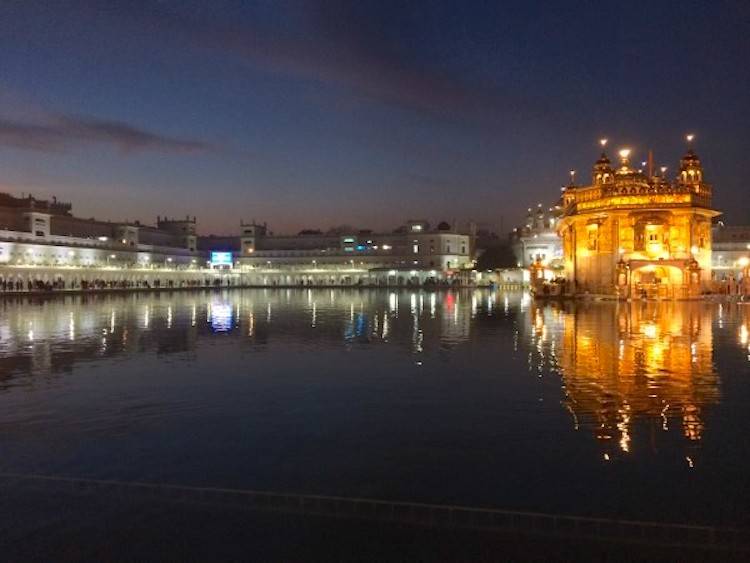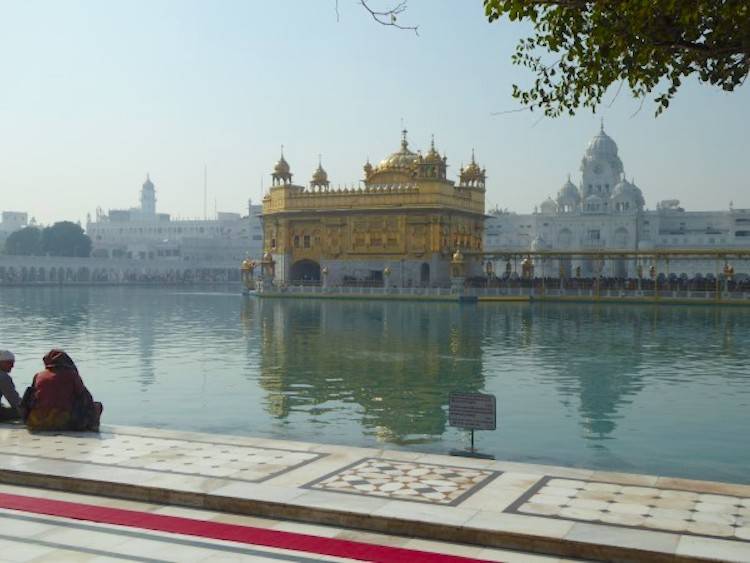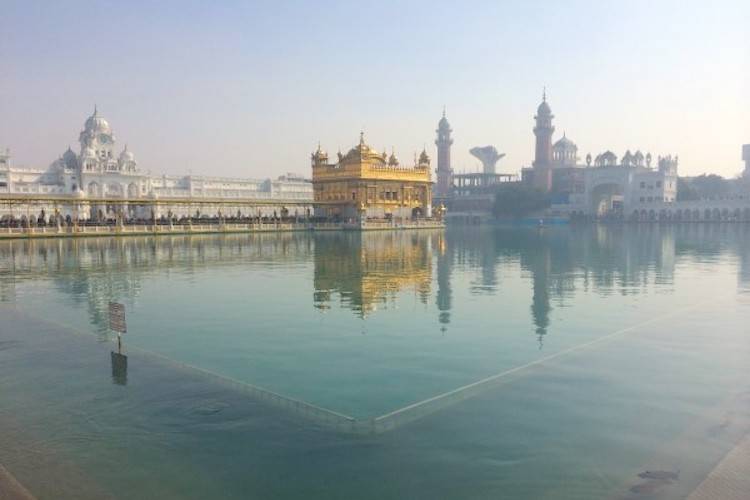*Today’s guest post on the Golden Temple Amritsar is by Sarah from www.asocialnomad.com. Images in this blog belong to Sarah from A Social Nomad and are subject to copyright regulation.
If you visit one Sikh temple in your lifetime, then make it this one, Amritsar’s Harmandir Sahib. It’s more commonly known as the Golden Temple, which when you see a photograph is an obvious name. The city of Amritsar in the North West of the Punjab, India is only 28 kilometres from the border with Pakistan. The Golden Temple is the spiritual and cultural centre for the Sikh faith and receives more annual visitors than the Taj Mahal.

The old city of Amritsar is a gritty glorious series of winding alleys, crumbling architecture and superb food. There is much history here. The Ramrirth temple is believed to be the Ashram site of Maharishi Valmiki, the writer of the Ramayana and the 1919 massacre of hundreds of Indian civilians by the British at Jallianwala Bagh took place here. More recently, the Indian military operation ordered by Indira Gandhi, Operation Blue Star killed more than 500 civilians and members of the armed forces.
Sri Harmandir Sahib – the Golden Temple
Quite literally “the abode of God”, this is the most important pilgrimage site of Sikhism and the temple complex receives more than 100,000 visitors each day. The complex is constructed around a man-made pool which was completed in 1577. The pool, named “the Pool of the Nectar of Immortality” gave its name to the city – it is quite simply, Amritsar.
The temple that we see here is not original, it’s been destroyed several times and rebuilt. The current temple dates from 1809 when it was rebuilt in marble and copper with gold foil being added in 1830. Area of the complex werealso rebuilt after the destruction caused during Operation Blue Star.
The temple complex is vast and is accessed by way of four entrances. All visitors must remove footwear and wash their feet prior to entry. Shoe and sandal storage is provided. Both men and women must also cover their hair and head scarves are also provided.
Tenets of Sikhism
Sikhism originated here in the 15th century with the fundamental beliefs that there is one creator and that the gender-less God is omnipresent and infinite with power over everything. Sikhs believe that all humans are equal – that there should be no discrimination by gender or caste. Sikhism is the fifth largest religion in the world with believers living their lives in selfless service, understanding that one should live an honest life.
The faith is based on the teachings of the first Guru of the Sikh faith, Guru Nanak, as well as the ten subsequent Gurus. The words of Guru Nanak form the basis for Sikh teaching:
“Realization of Truth is higher than all else. High still is truthful living”
Sikh’s worship in a Gurdwara. This word means quite literally, a “door to the Guru”. Sri Harmandir Sahib, Amritsar’s Golden Temple is the holiest Gurdwara.
The Golden Temple Complex
The complex is constructed on a square plan. A marble walking path surrounds the pool (or tank) and the temple sanctum is accessed in the centre of the pool via a walkway. The tank is where pilgrims from around the world come to bathe. The Harmandir Sahib is open to all people of all faiths. It is quite simply the most peaceful man-made place I have ever been to.

The Sri Harmandir Sahib
Walking on the marble path around the edge of the tank, you’ll find your eyes constantly drawn to the Golden Temple. Return at different times of the day to experience the different light and it will remain an incredible sight. Appearing to almost float on the water, it’s a combination of Islamic and Hindu architecture. Engraved golden panels adorn the second level of the temple and 750 kilograms of gold top the gilded dome.
Unusually and unlike temples of other faiths the temple is open to all visitors. Equality is a key tenet of Sikhism after all.

Here in priests constantly chant the holy scripture of the Sikhs – the Guru Granth Sahib. It’s soothing and adds to the incredible peace of the temple. The scripture is brought to the temple each morning, priests take three-hourshifts to chant with a full reading taking 48 hours. In the evening it’s returned to Akal Takht.
The Akal Takht
The “throne of the timeless one is one of five Sikh seats of power. It’s the highest seat of earthly power for the Sikhs. It was originally built as a simple platform where Guru Hargobind (the fifth Sikh guru) sat in court, received petitions and administered justice. Today’s modern building is five stories, with marble inlay and a gold leafed dome.
Sikh Faith Museum
Within the temple complex, you’ll find the Sikh faith museum – it is well worth a visit to understand more about the tenets of Sikhism and the history of this faith.
Langar at the Golden Temple Amritsar
The langar is a free Sikh community run kitchen. You’ll find one in every Gurdwara and it’s possible to volunteer here. Simple vegetarian meals are served here to all visitors. It’s a communal affair, file in, following the crowd. Take your place, sitting on the floor alongside other visitors. The food is served from large vats, onto a metal tray. Rice, roti, dhal and curd.

The temple complex of the Sri Harmandir Sahib is a peaceful place of worship. It truly is open to all. The photographs that you’ll take will wow friends and followers, but the sense of well-being and peace that you take from this place will remain with you always.
Link: https://asocialnomad.com/india/heritage-amritsar/
Travelling to Amritsar? Check out this Amritsar Travel Guide.
Further Reading on India
If you are travelling in India you might also like to read…
- A Golden Triangle tour of India
- What to wear in India
- My India travel stories
- Places to visit in Jaipur – The Pink city
- Pushkar – India’s Holy Lake
